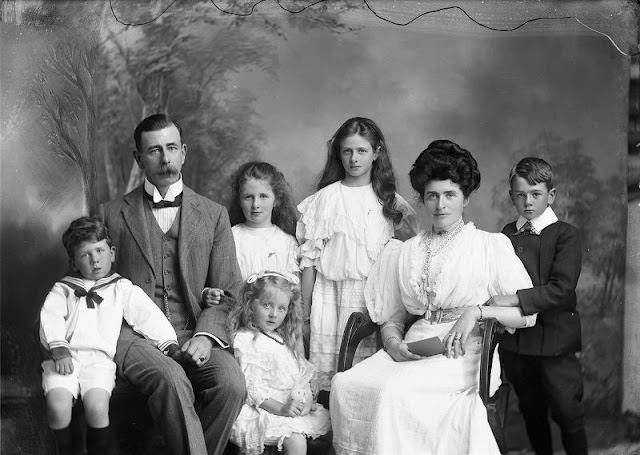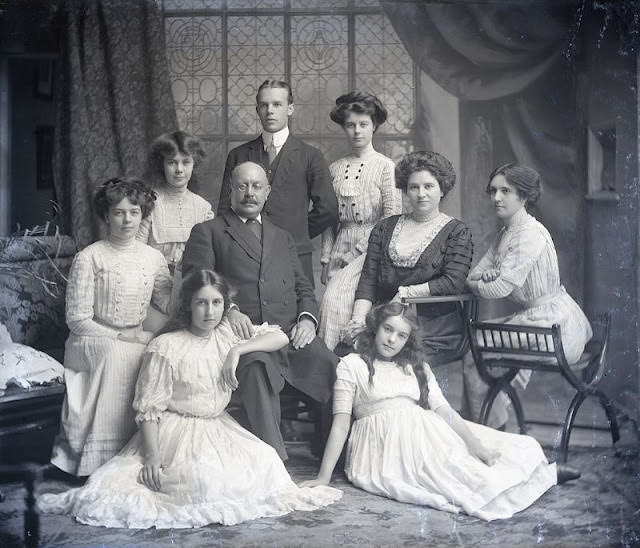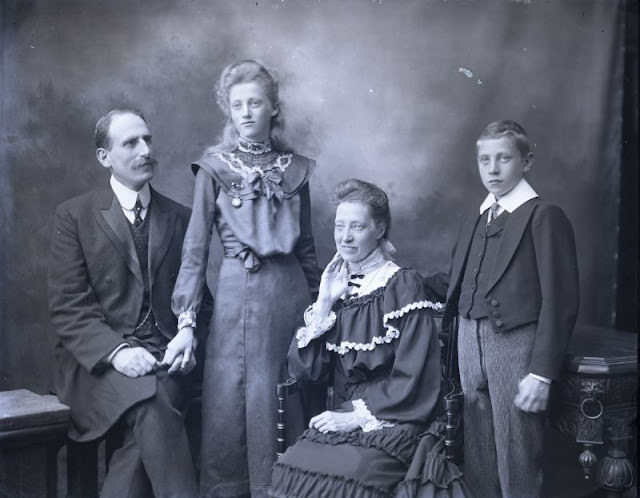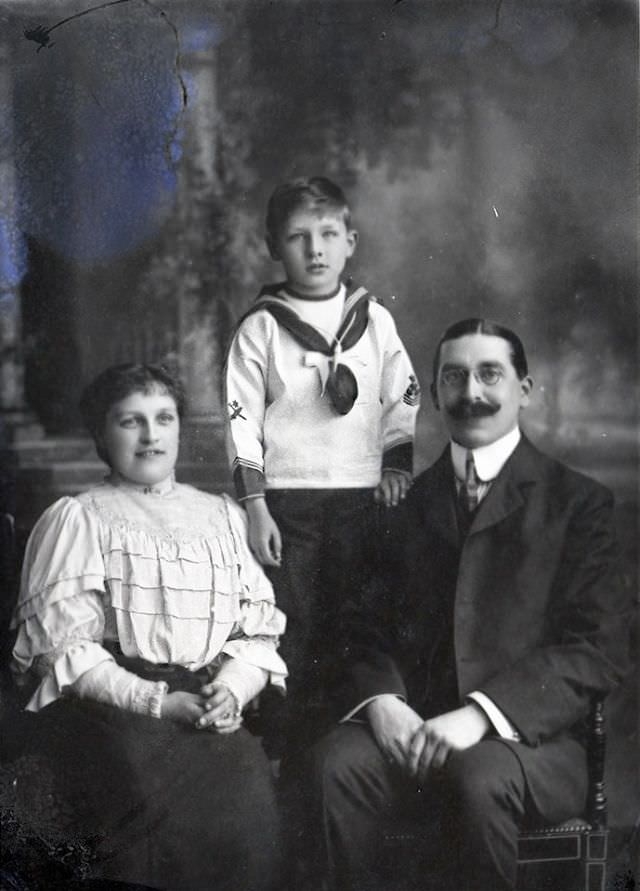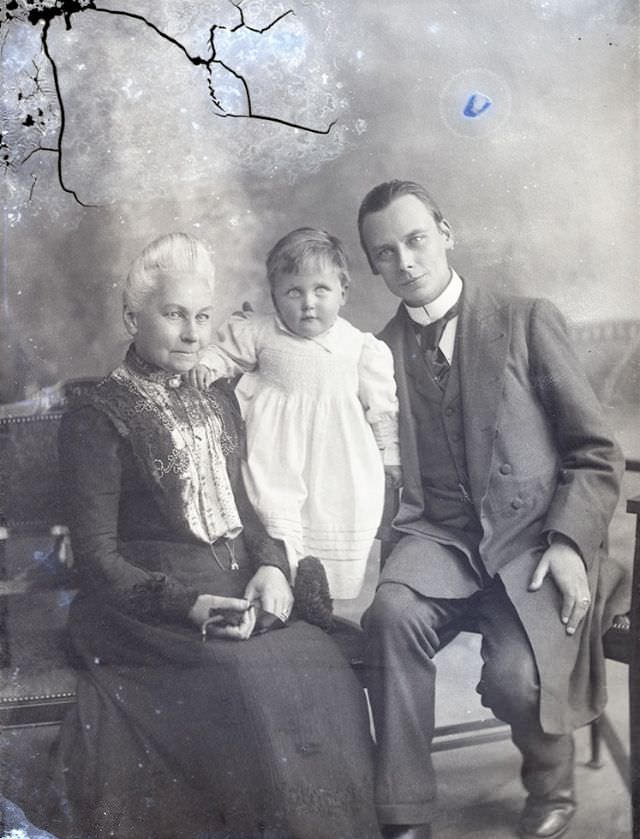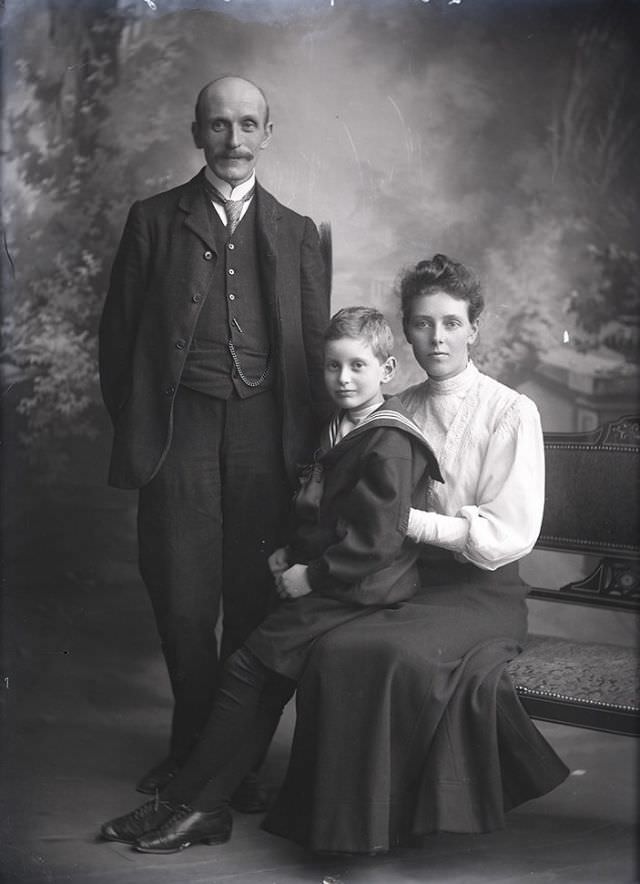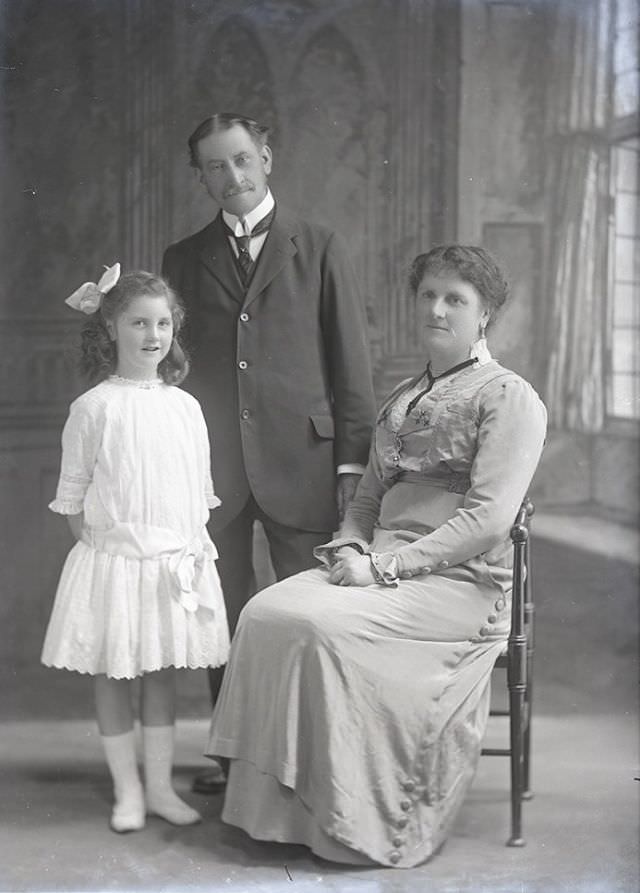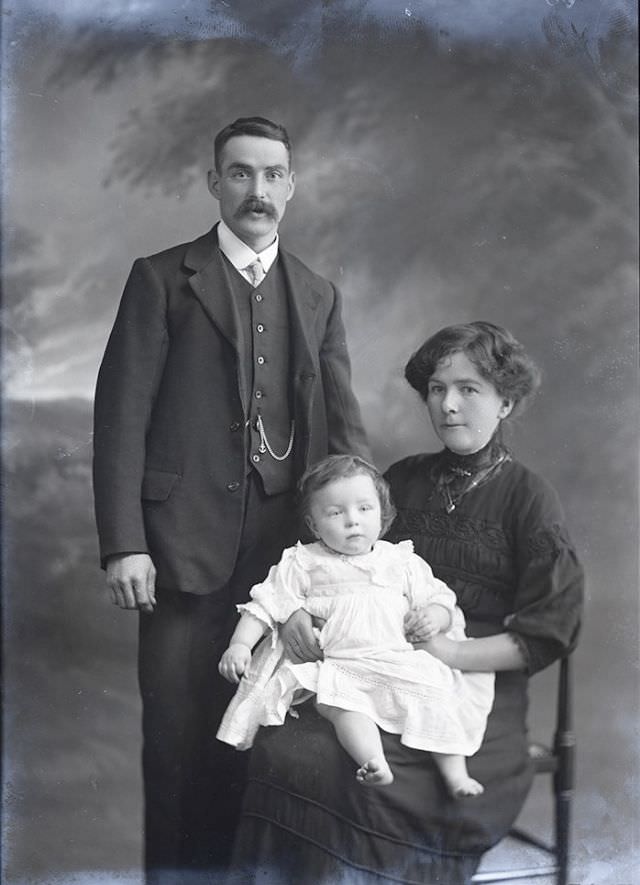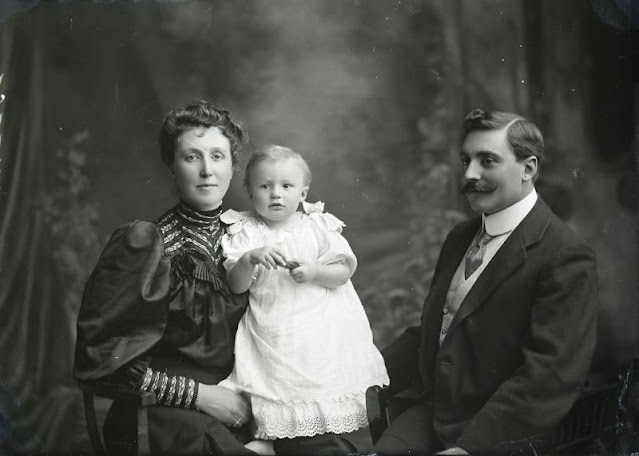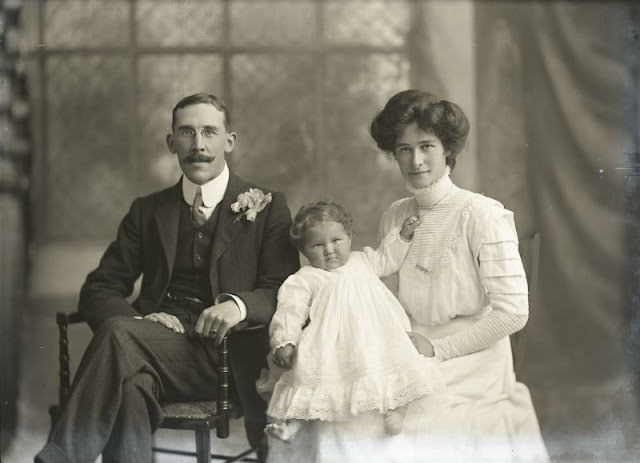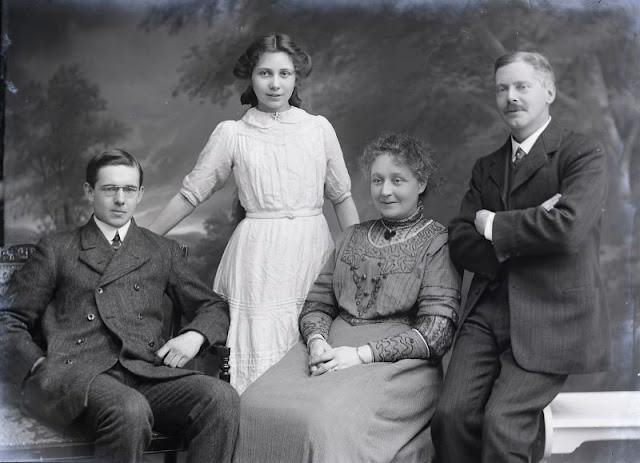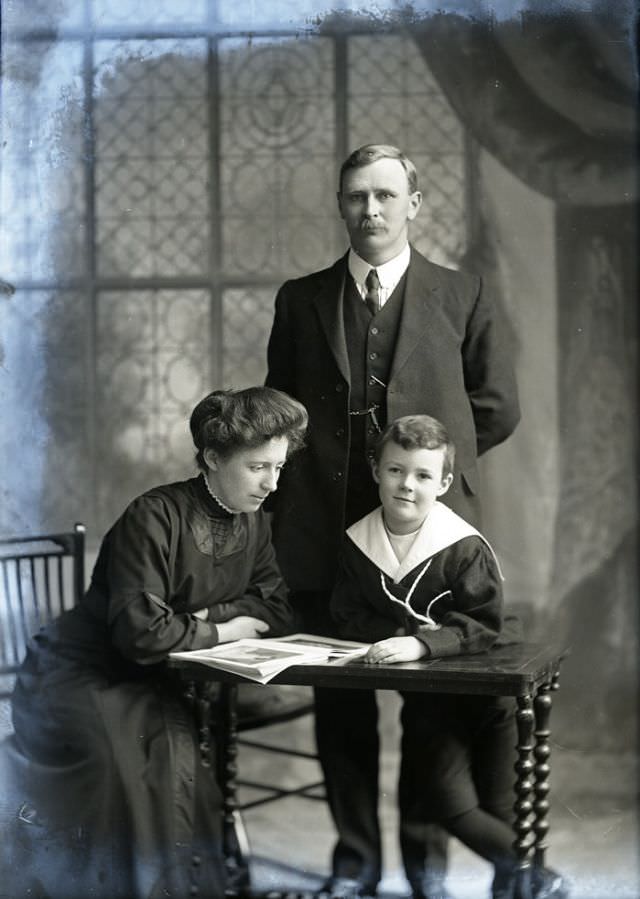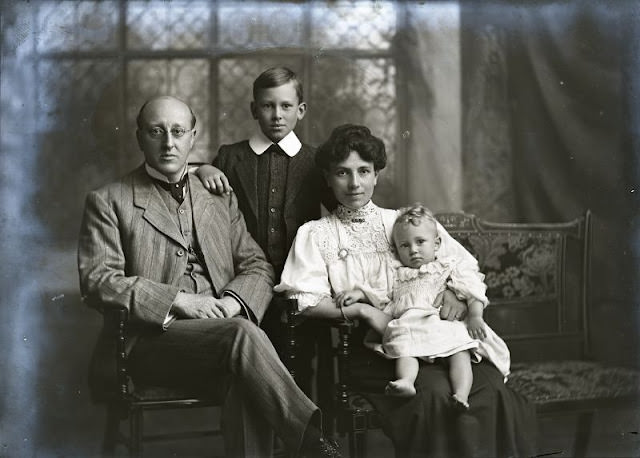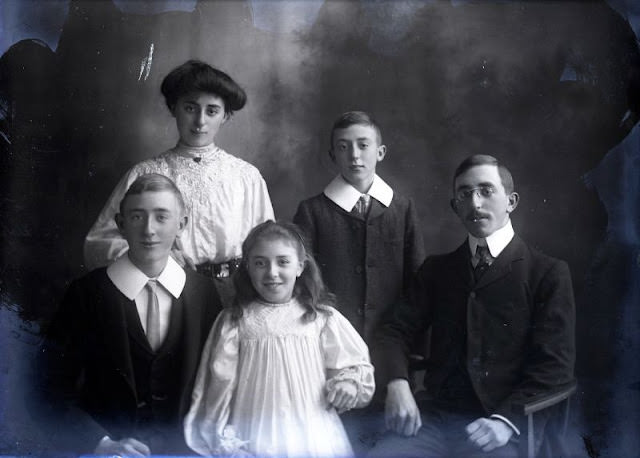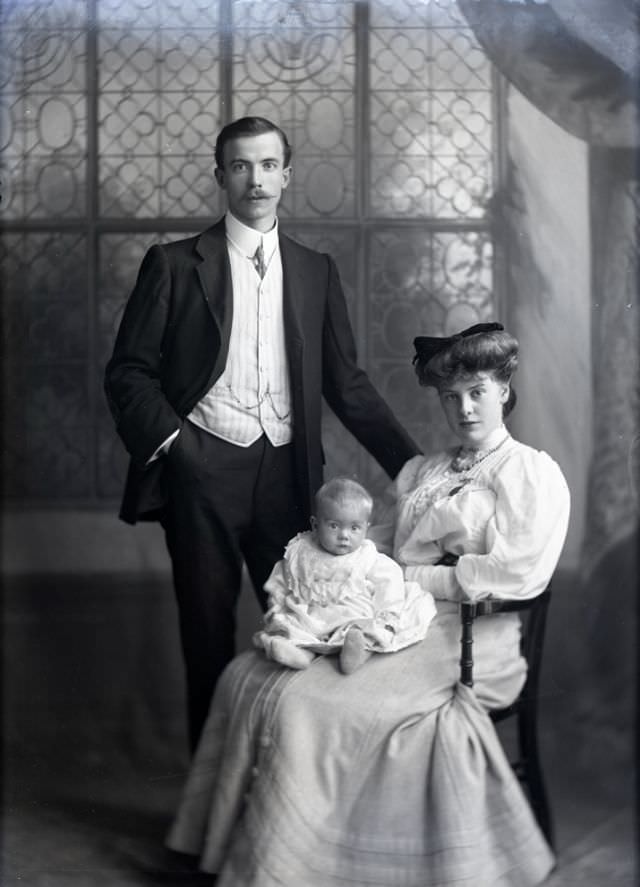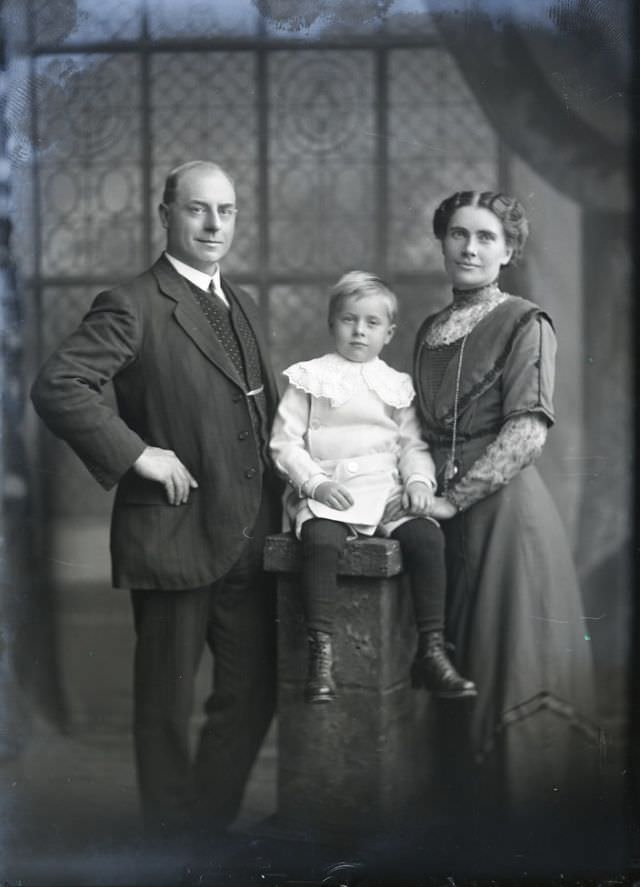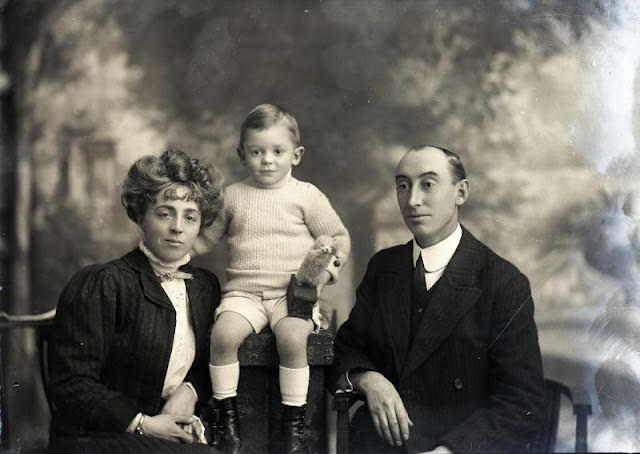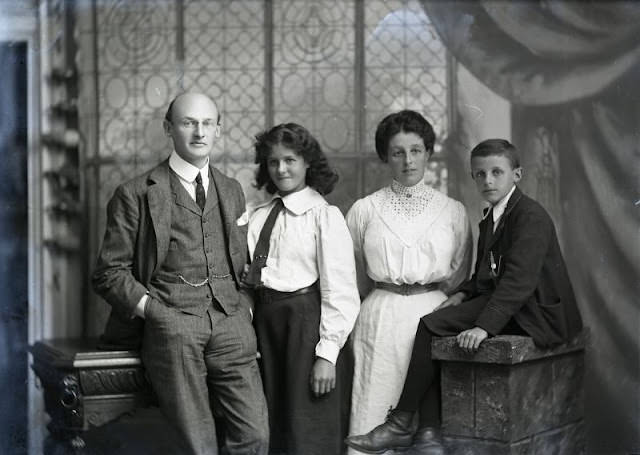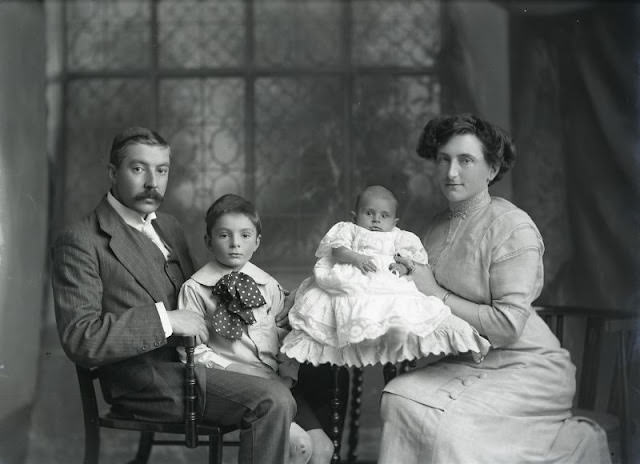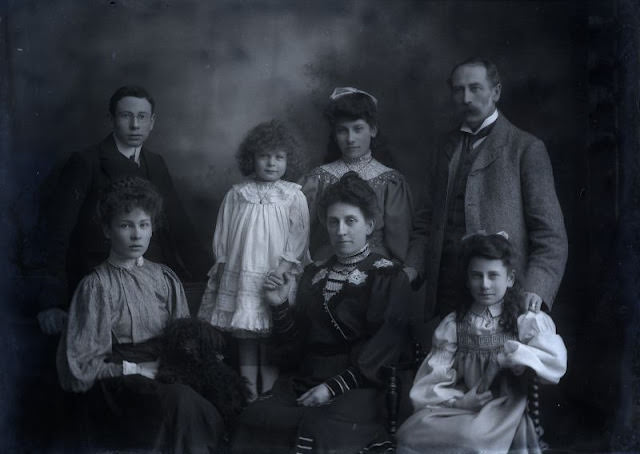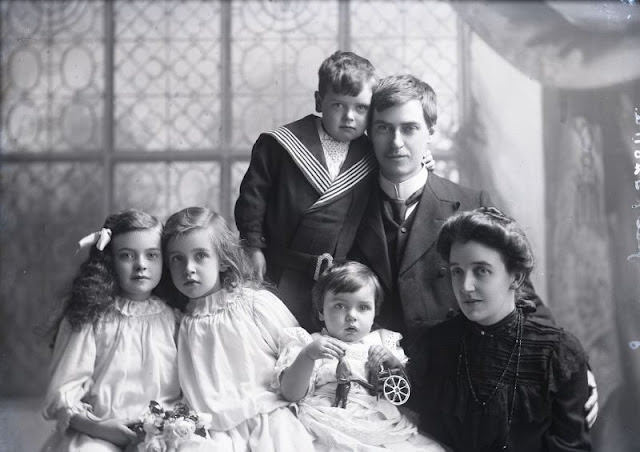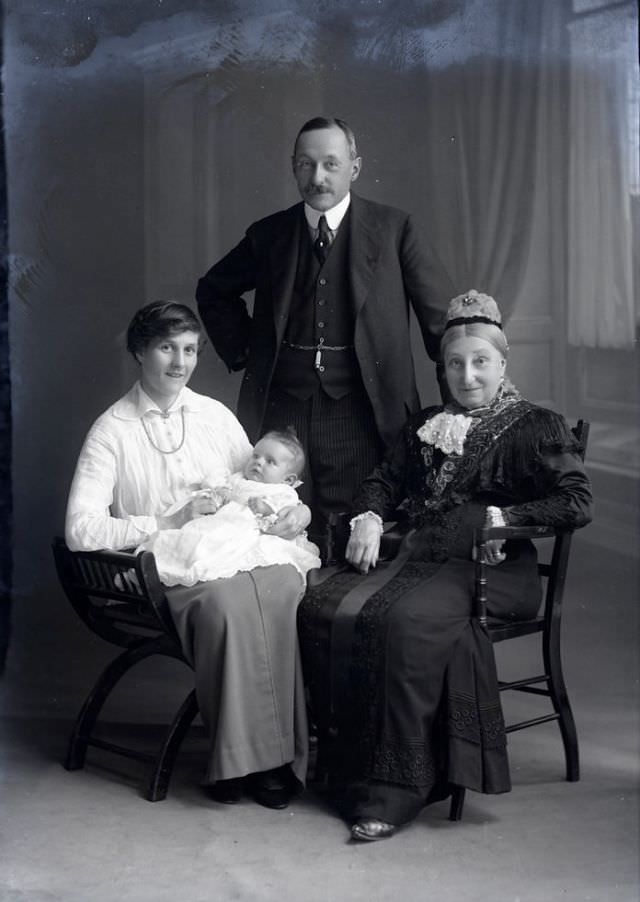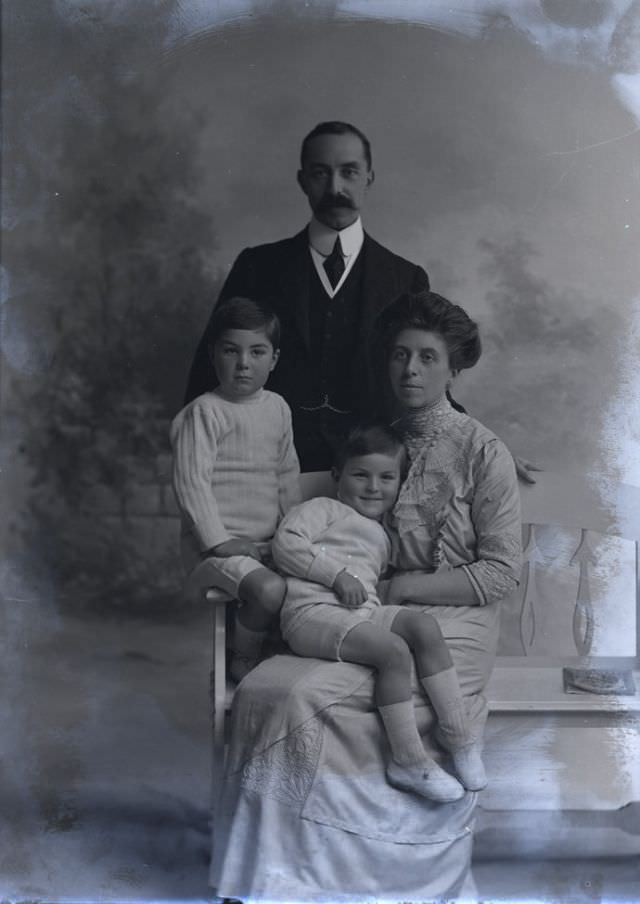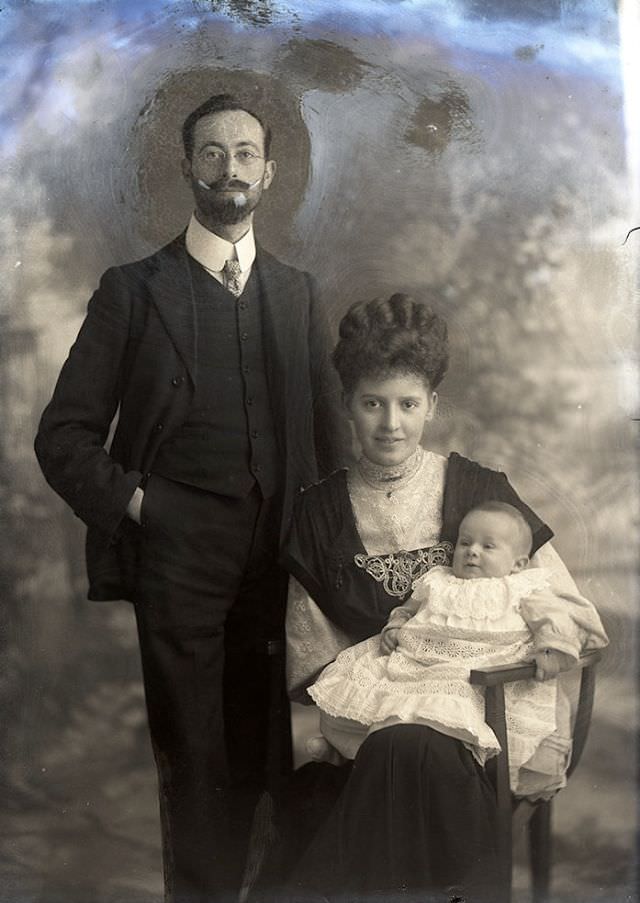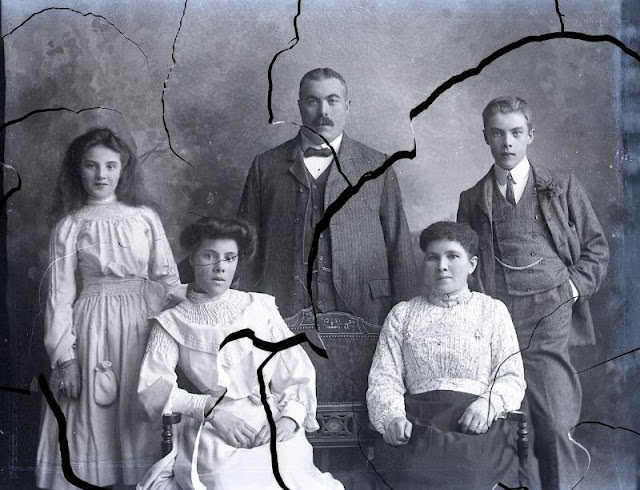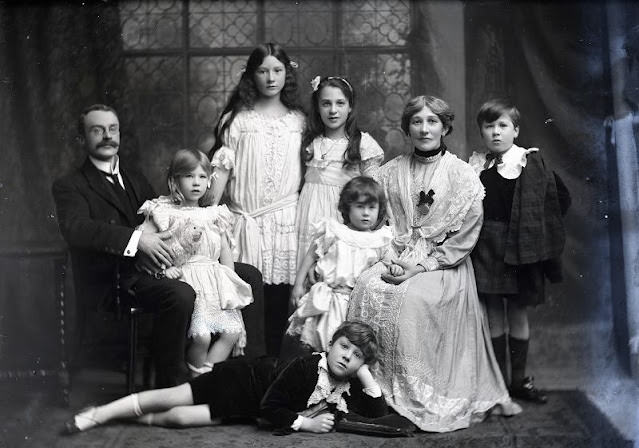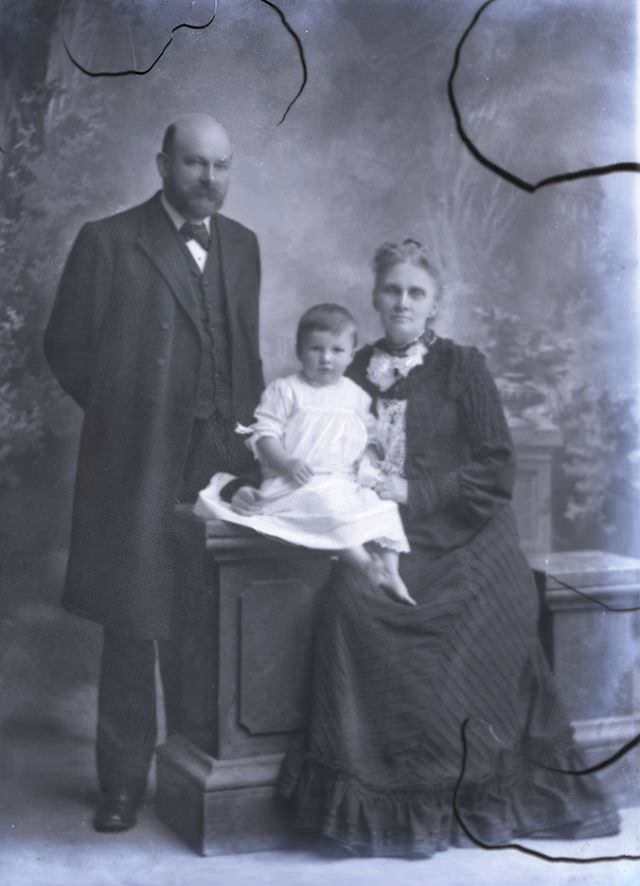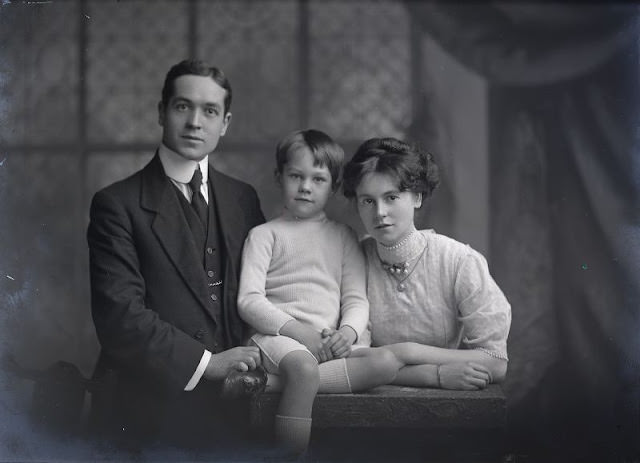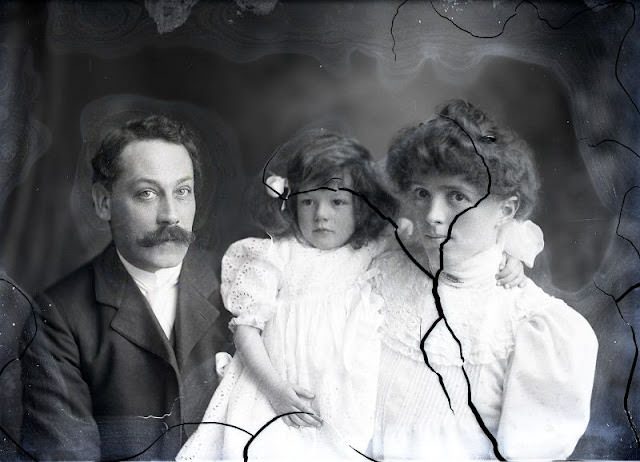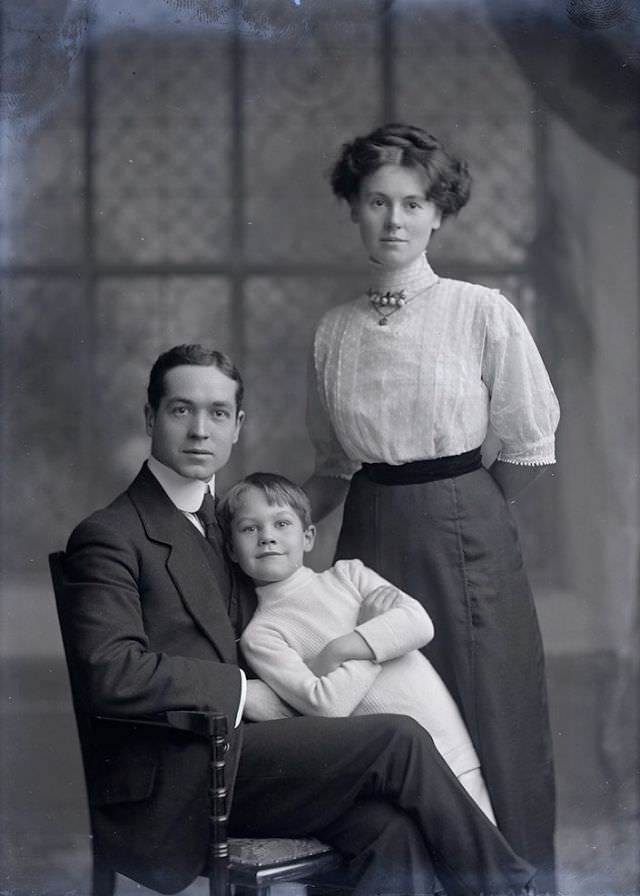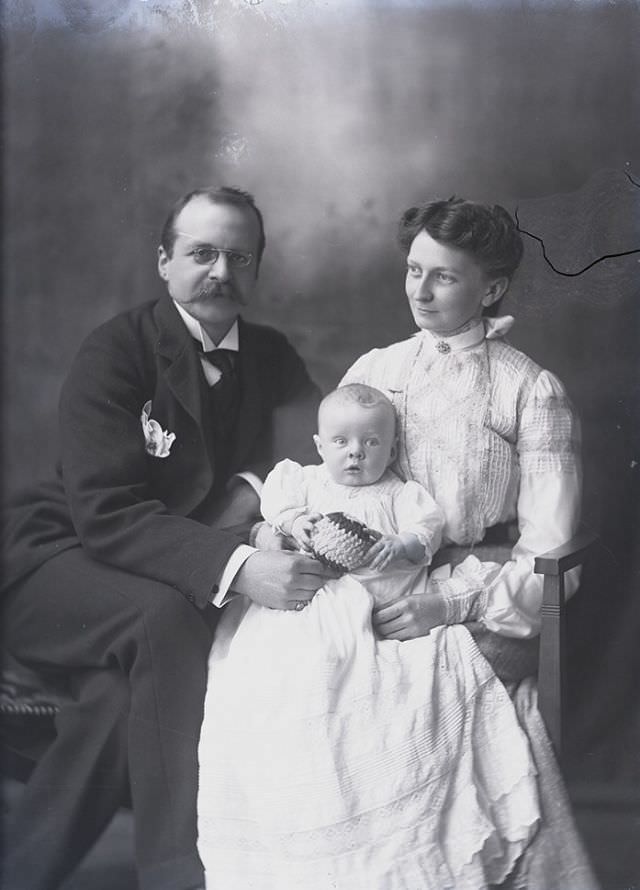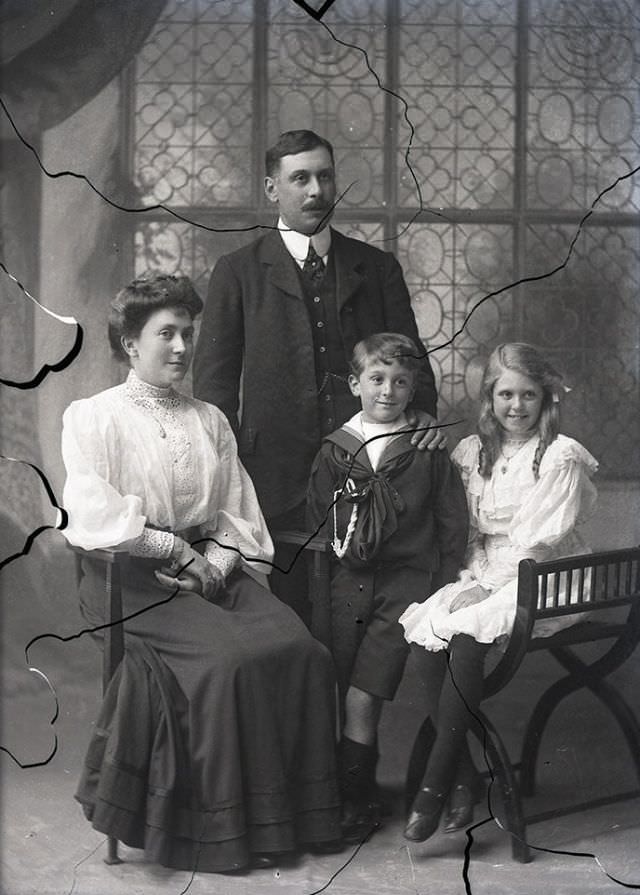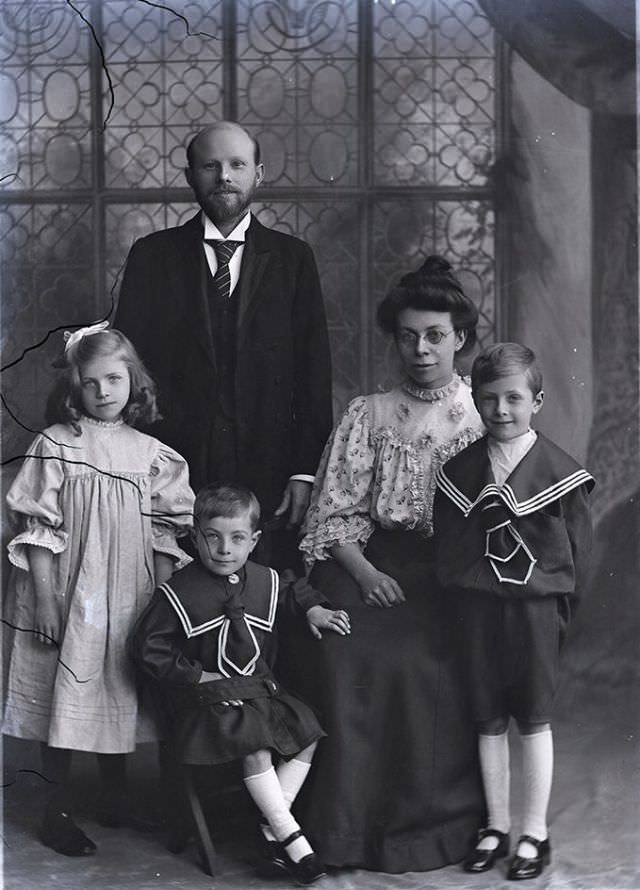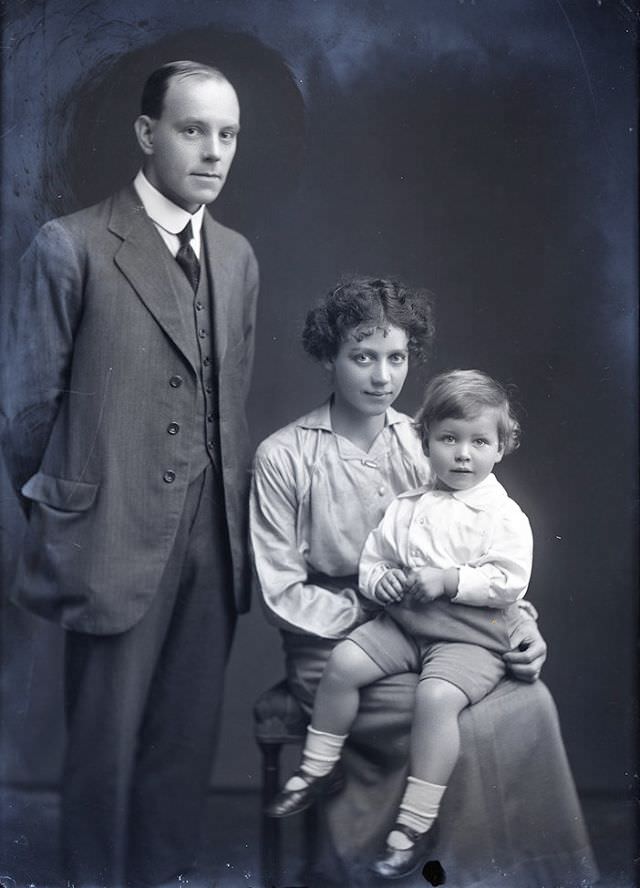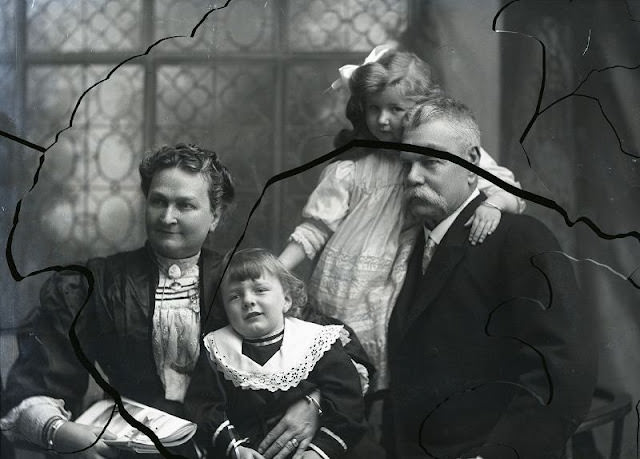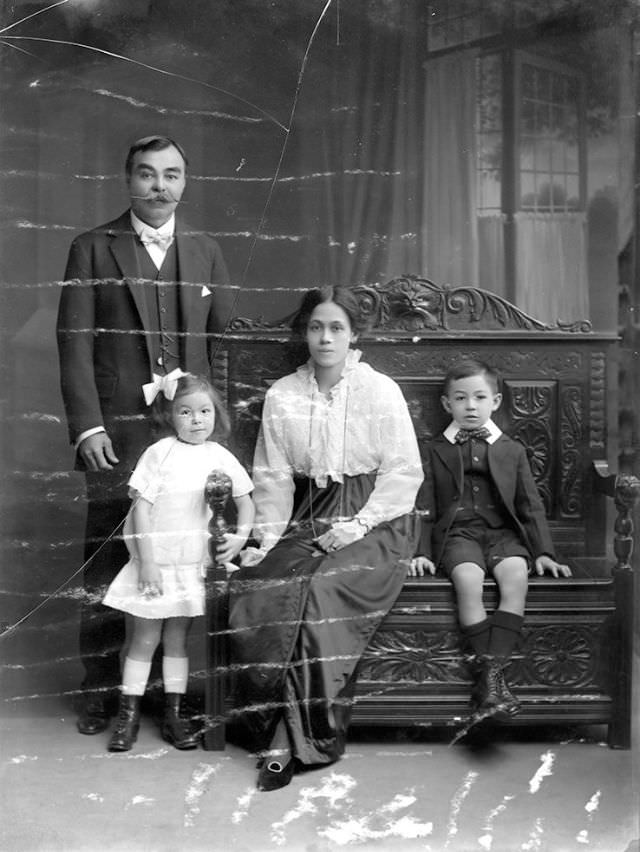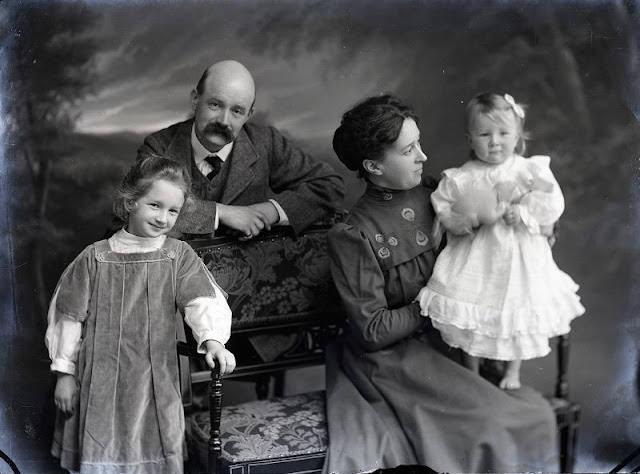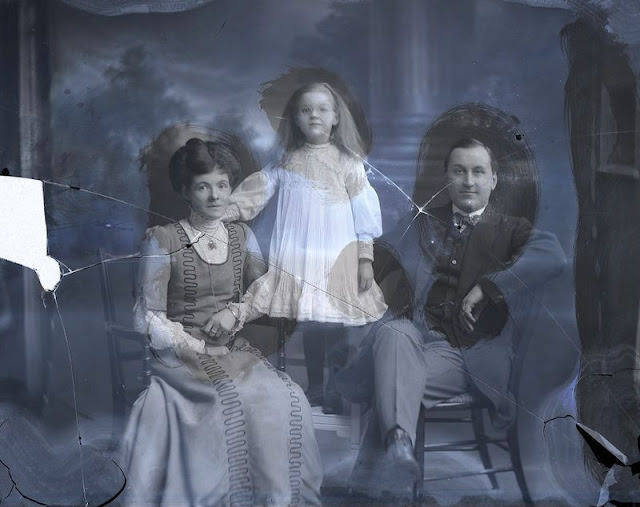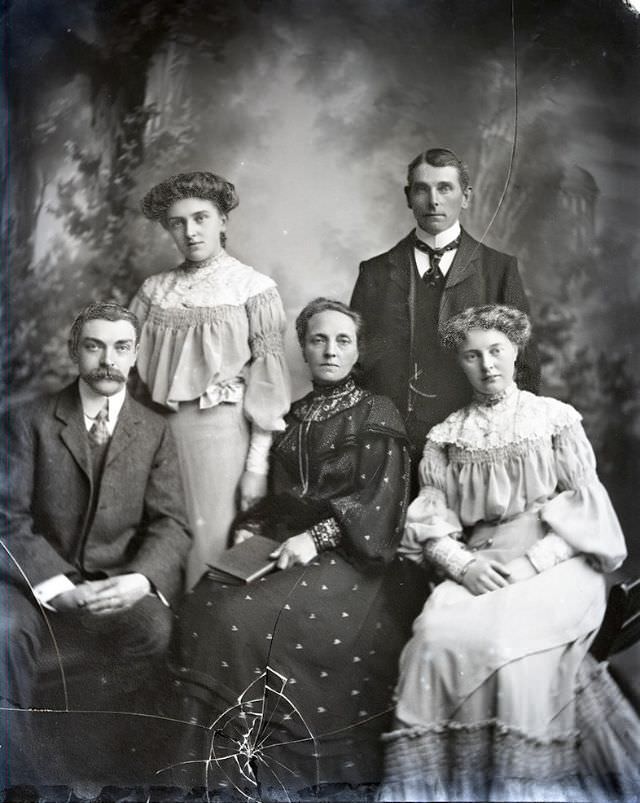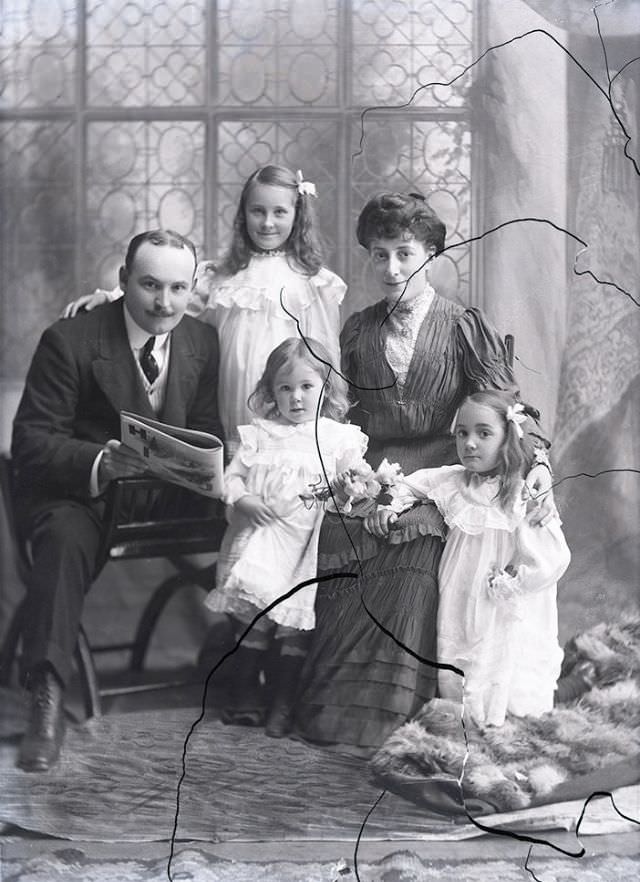The Edwardian era, spanning the reign of King Edward VII from 1901 to 1910, is often remembered for its significant social, political, and technological changes. However, it was also a period that witnessed a fascinating evolution in the realm of photography, particularly in the way families chose to immortalize their bonds and social status through studio portrait photos.
The late 19th and early 20th centuries saw significant advancements in photographic technology, making photography more accessible to the middle class. Studio portrait photography, in particular, became increasingly popular as families sought to document their existence and relationships in a formal, enduring manner. Edwardian studio portraits were not merely personal mementos; they were carefully curated images meant to convey status, values, and connections.
Edwardian Family Portraits
Edwardian family portraits are notable for their formal composition and the subjects’ attire. Families dressed in their finest clothing, with men often in suits or military uniforms and women in elegant dresses that reflected the latest fashions. Children, too, were dressed meticulously, highlighting the era’s emphasis on appearance and decorum.
The poses in Edwardian family portraits were typically stiff and formal, reflecting the era’s social norms and the limitations of early photographic technology, which required subjects to remain still for extended periods. Photographers employed various props and backdrops to create a sense of depth and context, often mimicking the interiors of affluent homes to elevate the subjects’ social standing.
Photographic studios were equipped with elaborate backdrops and furniture, allowing families to be photographed in settings that ranged from the convincingly domestic to the fantastically ornate. The choice of studio and setting often depended on the family’s wealth and social aspirations, with more affluent families opting for studios known for their elaborate setups and attention to detail.
Technological and Artistic Innovations
The Edwardian era witnessed the introduction of new photographic techniques and materials, including the widespread use of the dry plate process and improvements in camera design. These advancements reduced exposure times and enhanced image quality, enabling photographers to capture more detailed and expressive portraits. Some photographers experimented with lighting and composition, pushing the boundaries of portrait photography as an art form.
Also, check Women Police Mugshots and Mothers holding their Babies from the Edwardian era.


